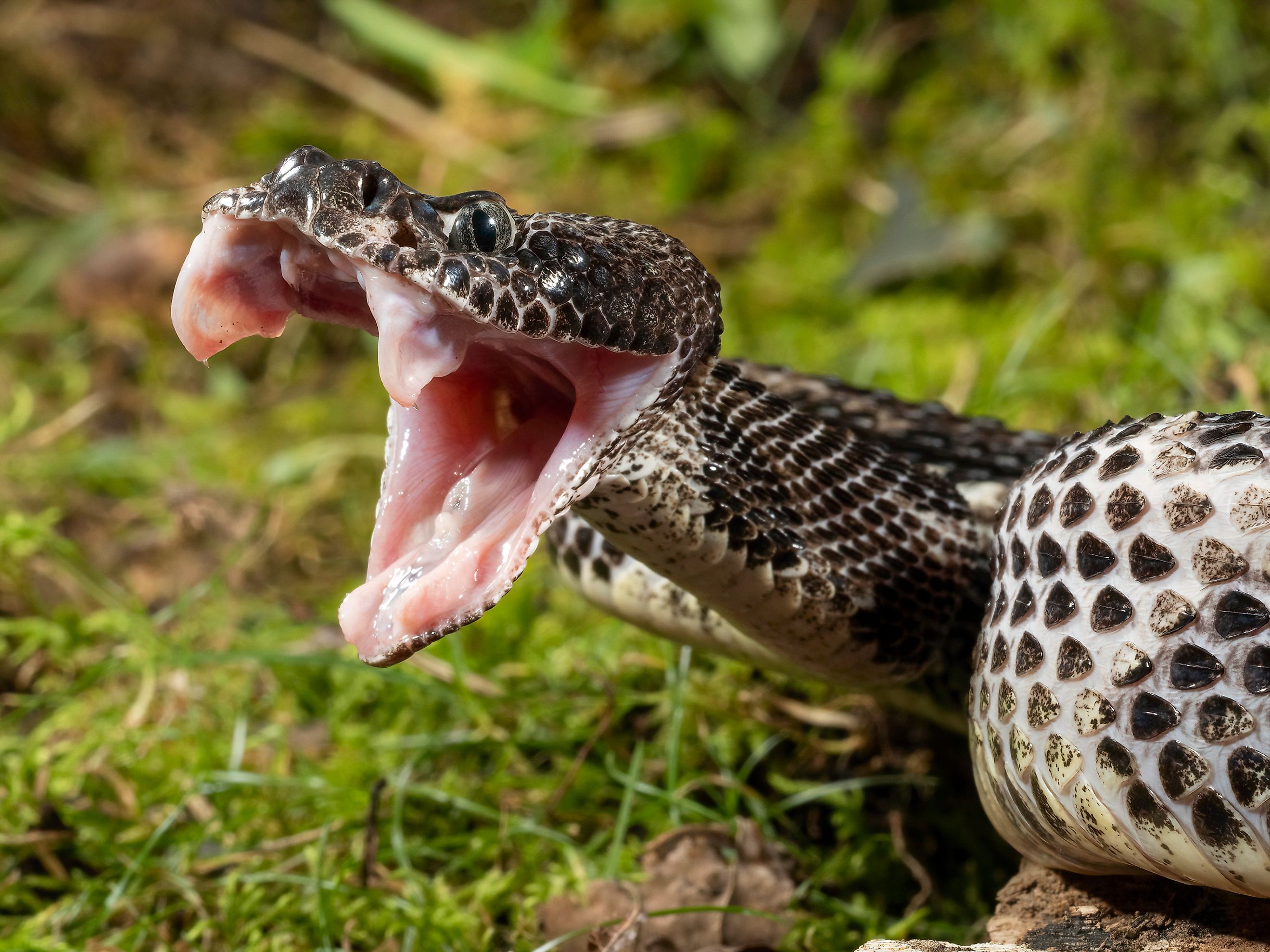
The 11 Deadliest Animals in Kentucky
Kentucky is situated in the Southeast of the United States. Known for its lush scenery, including forests, lakes, and hills, the state is home to a wide variety of creatures. Over 500 species have been identified within Kentucky, ranging from taxonomic groups such as mammals, reptiles, insects, and amphibians. However, it is important to point out that not all the animals that inhabit Kentucky are friendly. In fact, there are several species you should avoid altogether due to the potential dangers of an encounter. From venomous bites to aggressive attacks, these are Kentucky's 11 most dangerous animals. Stay tuned to find out more about these creatures and how to avoid confrontation next time you are out and about in Kentucky.
Eastern Copperhead
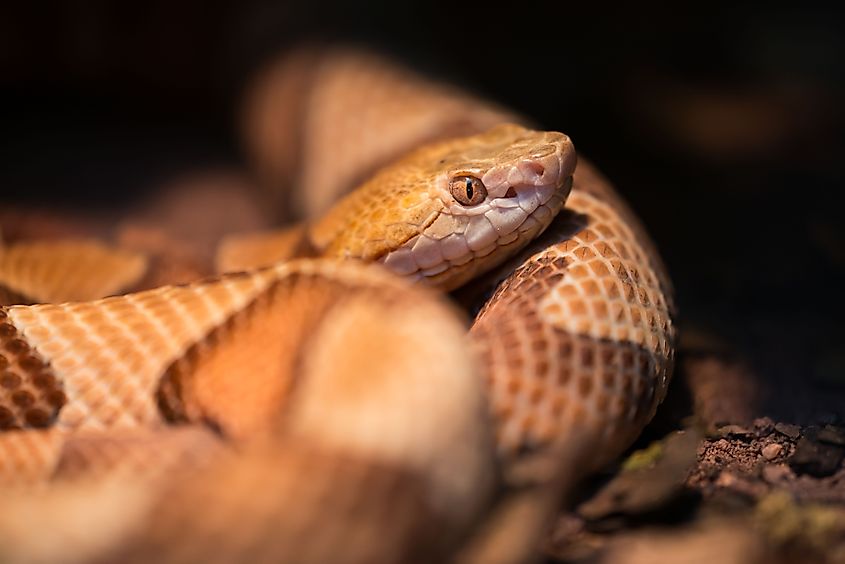
Copperhead, a species of venomous snake endemic to Eastern North America, in its natural habitat.
The Copperhead (Agkistrodon contortrix) is found statewide across Kentucky and can vary in color from brown to reddish brown. One of the identifying characteristics of a Copperhead is the "hourglass" shape they have when viewed from above, created by the wide crossbands situated along the side of its body. This type of snake can be found in habitats including rocks, wooded hillsides, lowland areas by streams, or in piles of wood and mulch. While copperheads are typically non-aggressive, they are venomous. This means they carry a specialized gland that produces venom to kill or defend themselves from prey. Although there are only around 9-15 deaths caused by snakebites each year, a person who encounters or is bitten by a Copperhead in Kentucky should seek help immediately.
Timber Rattlesnake
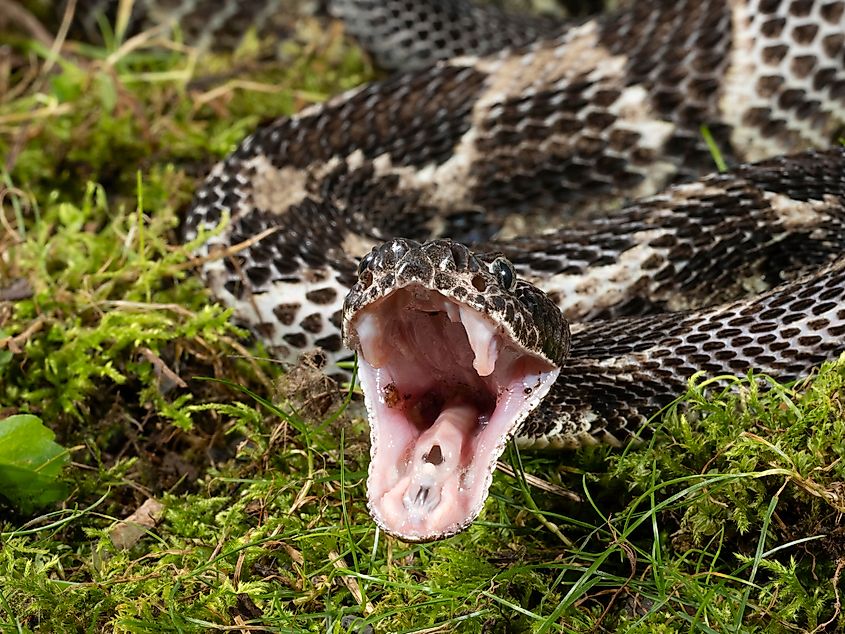
Another dangerous snake found across the wooded areas of Kentucky is the Timber Rattlesnake (Crotalus horridus). Considered the largest venomous snake in Kentucky, this venomous reptile is distinguished by its dark, V-shaped crossbands that either occur on a brown, gray, yellow, or greenish background. Another unique characteristic of the rattlesnake is the rattle on the tip of its tail, which will shake when alarmed. Although the Timber Rattlesnake can live around 25 years, the late maturing and infrequent reproduction of the snakes make them susceptible to human persecution and habitat destruction. The Kentucky Department of Fish and Wildlife Resources has declared the rattlesnake a “Species of Greatest Conservation Need.”
Cottonmouth / Water Moccasin
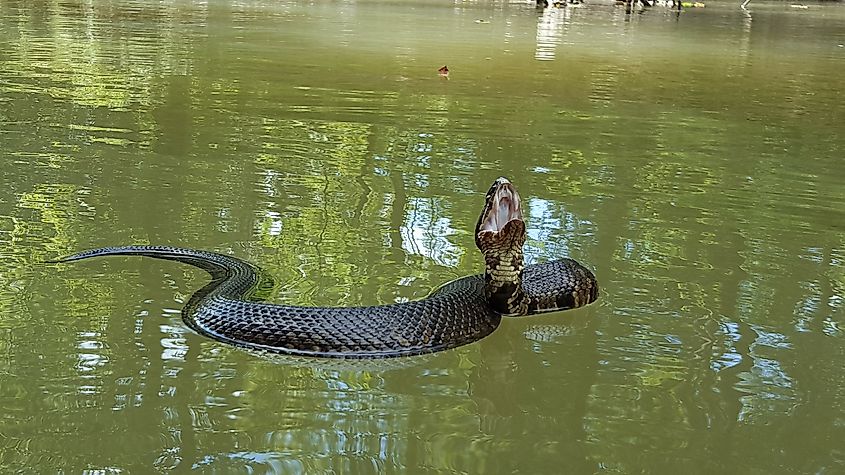
Water moccasin snake floating on water.
The Western Cottonmouth (Agkistrodon piscivorus leucostoma) is another venomous snake found in or around water in Western Kentucky. An average-sized Cottonmouth reaches 3-4 feet in length. Also called a water moccasin, these snakes differ from other harmless water snakes due to the scales above their eyes that stick out, blocking their eyes from view. In water, these snakes swim with their heads sticking out. When encountered, Cottonmouth snakes will not flee but instead stand their ground, vibrate their tail, and open their mouth in a “threat display.” The venom that Cottonmouths expel with their bite is composed of hemotoxins that break down blood cells and prevent them from clotting. A person bit by one of these snakes may experience temporary to permanent muscle damage, along with extreme pain. While death is rare, these venomous snakes are still considered dangerous. Any person bitten by a Cottonmouth should seek medical assistance immediately.
Black Widow Spider
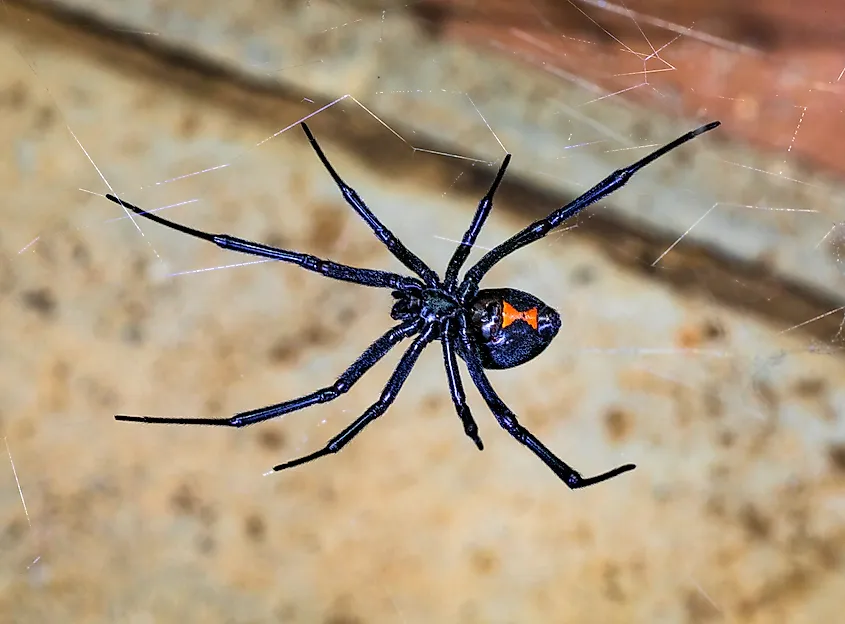
Black widow spider poised in its web, waiting for prey.
Black Widows (Latrodectus mactans) are spiders commonly found across the state of Kentucky. Black Widows can be found outdoors, in concealed places like under rocks or in the corner of garages. Including its legs, a Black Widow is around the size of a half-dollar. Its appearance includes a large and round abdomen with an hourglass shape that is either red, orange, white, or tan. They are otherwise shiny and black and have webs that are tangled. Although this type of spider is not considered aggressive, they can be incredibly dangerous. A person bitten by a Black Widow can experience immense pain that spreads towards the center of the body. In some cases, the pain may feel similar to appendicitis or a heart attack. In some cases, a bite from a Black Widow can cause difficulty breathing and lead to death.
Brown Recluse Spider
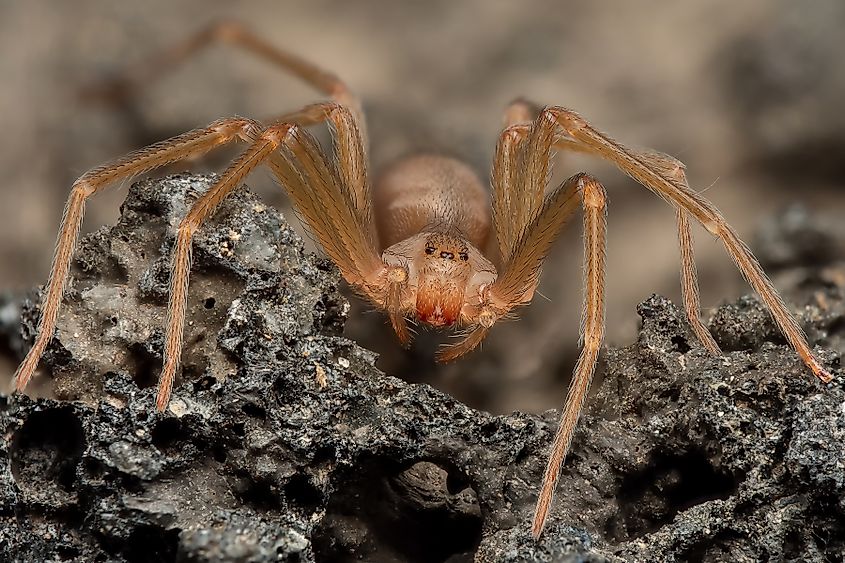
Mediterranean recluse spider, also known as the violin spider (Loxosceles rufescens), in its natural habitat.
Another spider found in the Western region of Kentucky is the Brown Recluse (Loxosceles reclusa). These insects are either tan or deep brown with outstretched legs. Unlike other spiders, a Brown Recluse only has six eyes instead of eight. Another unique characteristic of the Brown Recluse is a violin-shaped mark on its back, with the “neck” of the violin situated towards the spider’s rear. A Brown Recluse typically avoids human activity and is instead found in dark spaces such as basements, woodpiles, and garden gloves. Despite their avoidance of humans, they will bite if they are threatened. One of the reasons why Brown Recluse spiders are so dangerous is due to their venomous bite. The venom leaves a crater-like scar and can destroy the surrounding tissues, fat, or muscles. In some cases, the venom can spread to the rest of the body and become life-threatening. Although there is no antidote for a Brown Recluse bite, medical attention should be requested immediately to help prevent or treat infection.
American Black Bear
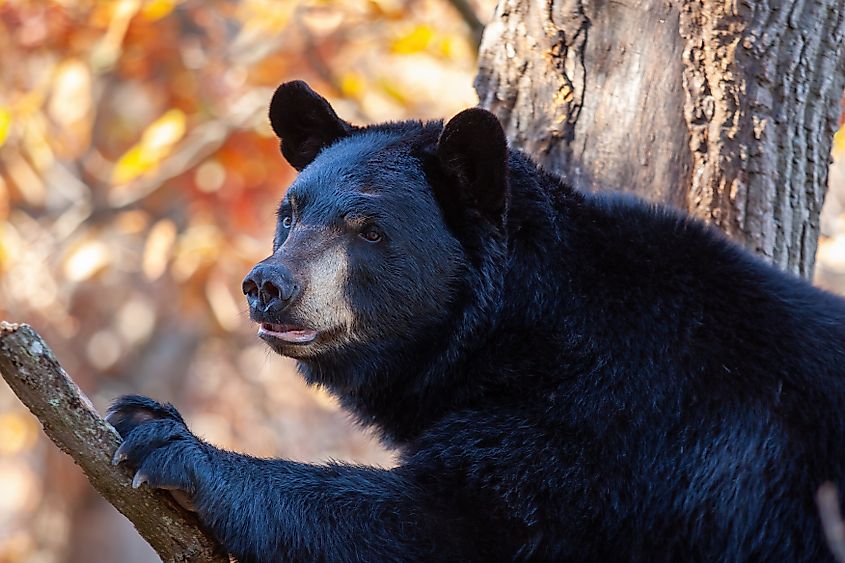
Black bear sitting on a tree branch, gazing into the distance.
The American Black Bear (Ursus americanus) can be found along the Pine, Cumberland, and Black Mountain areas of Kentucky. Kentucky’s Department of Fish and Wildlife Resources identified that the danger of Black Bears comes from the conflicts resulting from intentional feeding or access to human-related resources. Bears are known for “nuisance behaviors” that occur as a product of their environment. Such nuisances include being attracted to garbage, pet food, bird feeders, or other items that cause them to boldly and frequently interact with or near humans. Although Black Bears may seem tolerant around humans, especially if they have been showing signs of nuisance behaviors, an encounter with a bear can be extremely dangerous. Given their weight and size, Black Bears are powerful and often unpredictable. A bear attack can be deadly, so a person who believes a bear is about to be aggressive towards them in Kentucky should not run but instead stand their ground or, if necessary, fight back aggressively.
Coyote
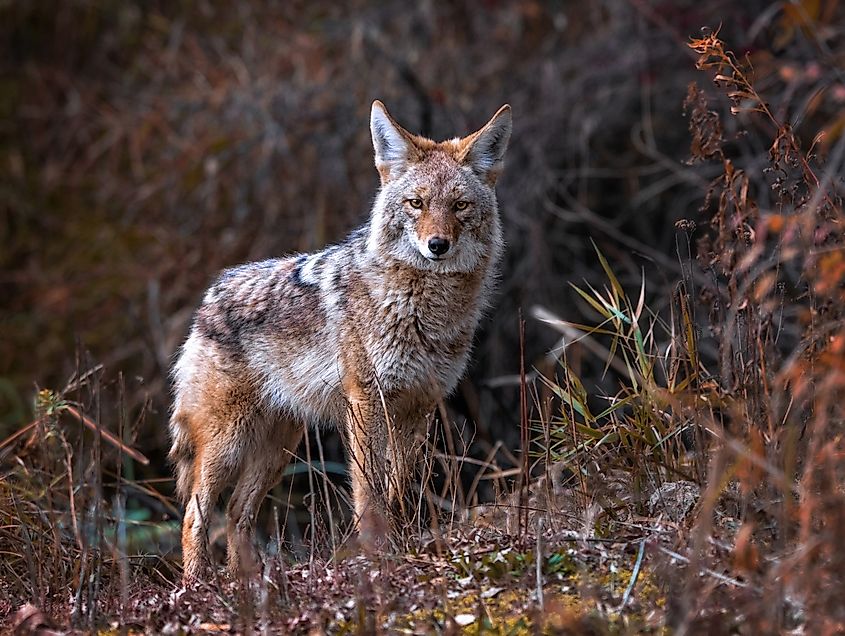
Beautiful photo capturing a wild coyote in its natural habitat.
The Coyote (Canis latrans) is commonly spotted across all Kentucky counties. Average adult coyotes can reach between 15-44 pounds and are typically found in packs. Unlike a standard dog, coyotes run with their tails down. Coyotes can make homes in diverse types of environments, often found in farmlands as well as the Kentucky suburbs. Coyotes are considered a “nuisance” due to becoming so habituated to human environments. Despite coyotes attempting to avoid contact with humans, you should never approach a coyote or attempt to run away from one. While rare, a coyote could become aggressive and attempt to chase a human.
Ticks
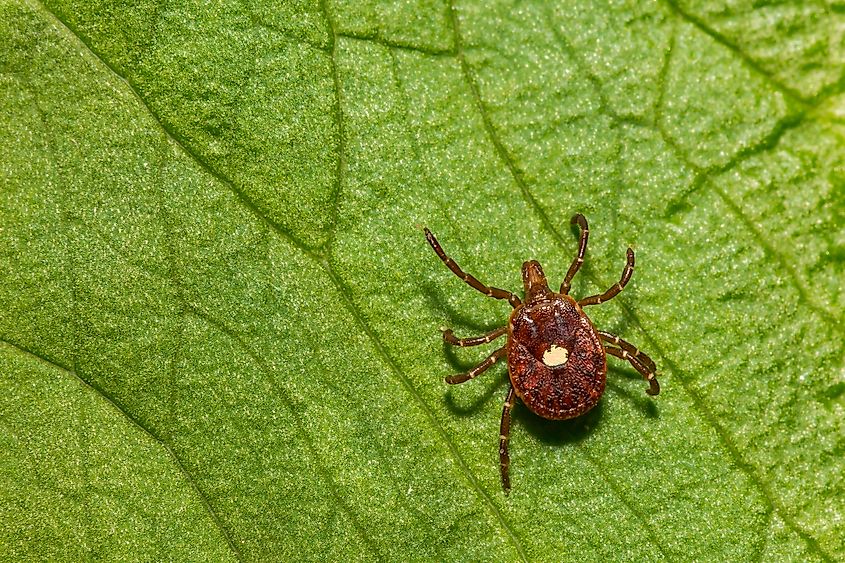
Close-up of a Lone Star Tick (Amblyomma americanum) on a leaf.
A tick is an arachnid made up of two body parts: the cephalothorax and the abdomen. Unlike insects, a tick is an arachnid with eight legs. Ticks are considered hemimetabolous, which means they go through a metamorphism that is incomplete. The life stage of a tick includes four stages: egg, larva, nymph, and adult. There are several distinct types of ticks in Kentucky, including the Lone Star Tick (Amblyomma americanum), the Blacklegged Tick (Ixodes scapularis), and the Gulf Coast Tick (Amblyomma maculatum). The reason that ticks pose a danger to humans is the potential diseases they carry and can transmit. When a tick feeds on a host, it can pass pathogens that cause bacteria, viruses, and protozoa. The most common tick-borne diseases include Lyme disease and Rocky Mountain Spotted Fever. A person who has been bitten by a tick with a disease may experience fever, chills, rashes, aches, and pains. A person who finds a tick on them should contact a medical professional.
Mosquitos
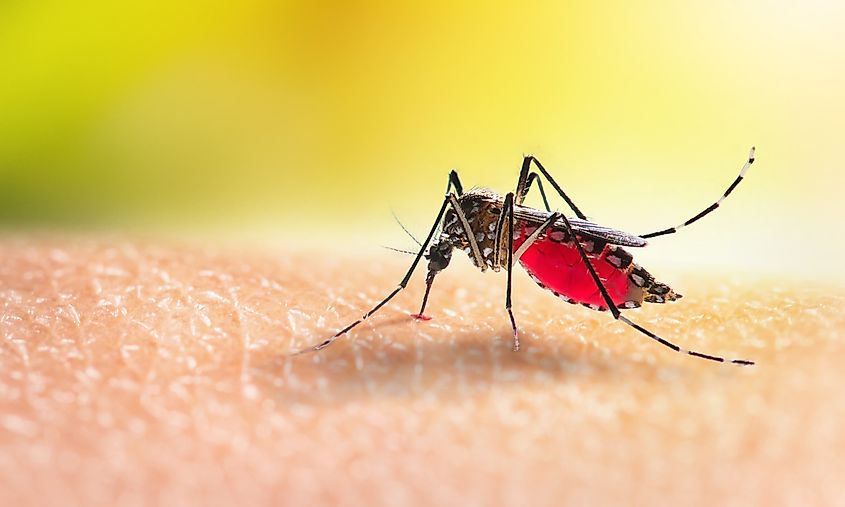
Macro shot of a mosquito feeding on a man's skin.
Mosquitoes (Culicidae) are insects often considered one of the most dangerous pests in the world due to the potential diseases they can carry. Kentucky hosts two main species of mosquitoes: the Asian tiger mosquito and the Aedes aegypti mosquito (Yellow Fever mosquito). The Asian tiger mosquito has white stripes on its body and was brought to North America over the last several centuries through trade. The Yellow Fever mosquito has white-spotted patterns along its legs. Although mosquitoes are quite small and inconspicuous, the danger they pose is due to the fast and easy spread of illness. The World Health Organization found over 500 million cases of mosquito-borne illnesses each year. Some of the dangerous diseases transmitted by mosquitoes include the West Nile Virus, Dengue fever, Zika virus, and Malaria.
White-tail Deer
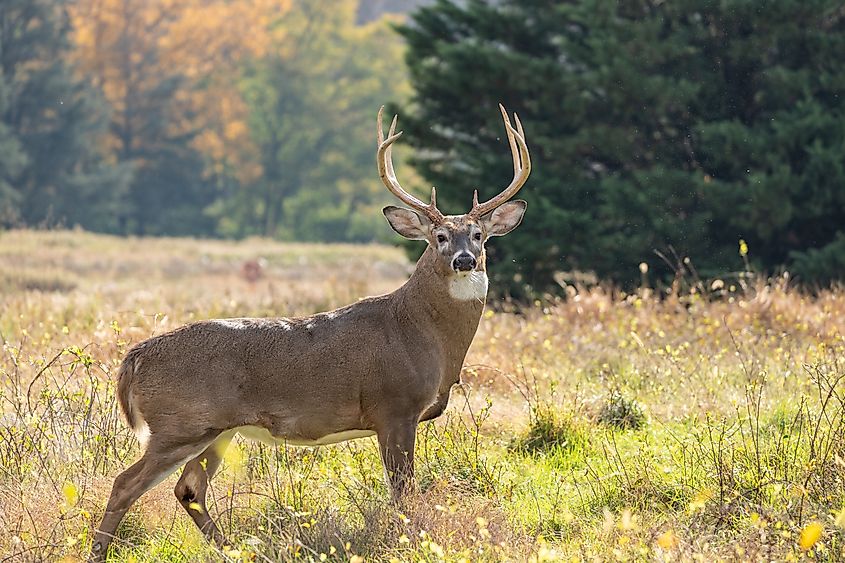
White-tailed deer (Odocoileus virginianus) buck in an autumn landscape.
The White-tailed deer (Odocoileus virginanus) is an animal that appears innocent due to a lack of predatory characteristics. However, deer can cause a severe amount of danger when they come into contact with humans, specifically when they run into oncoming traffic. Kentucky has experienced so many deer-related collisions that the Commonwealth has considered them one of the most dangerous animals in the State. Since deer are herd animals, if one is about to cross the road, more will likely follow suit, causing collisions with cars. Additionally, White-tail deer are considered nuisances because they damage crops, plants, and private property.
Cow
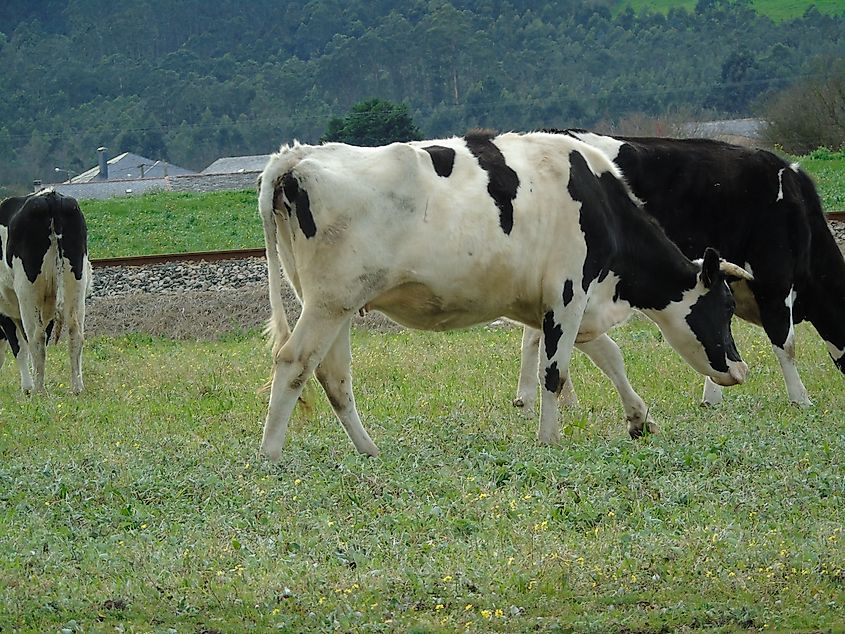
One of the most dangerous animals in Kentucky may be surprising. Domestic cattle, or cows (Bos taurus), have been named the most dangerous animal in the state. According to the CDC, deaths caused by the common cow most often happen through “blunt force trauma” injuries to the head or the chest. Like the White-tailed deer, deadly impact with a cow can occur if they walk into oncoming traffic. Cows can also become a danger to people who enter enclosed spaces with them.
Staying Safe in Kentucky's Wild
Despite Kentucky being a densely populated state, there is still plenty of wildlife wandering around. Four-legged, flying, and slithering creatures can be spotted across the terrains of the state, from the Appalachians and Bluegrass regions. With a climate ranging from humid subtropical, temperate continental, and humid continental, there is a wide variety of species that inhabit the State. From infectious ticks to venomous snakes and wandering deer, it is best to be on the lookout for Kentucky’s most dangerous animals to ensure you have a safe and fun visit.











